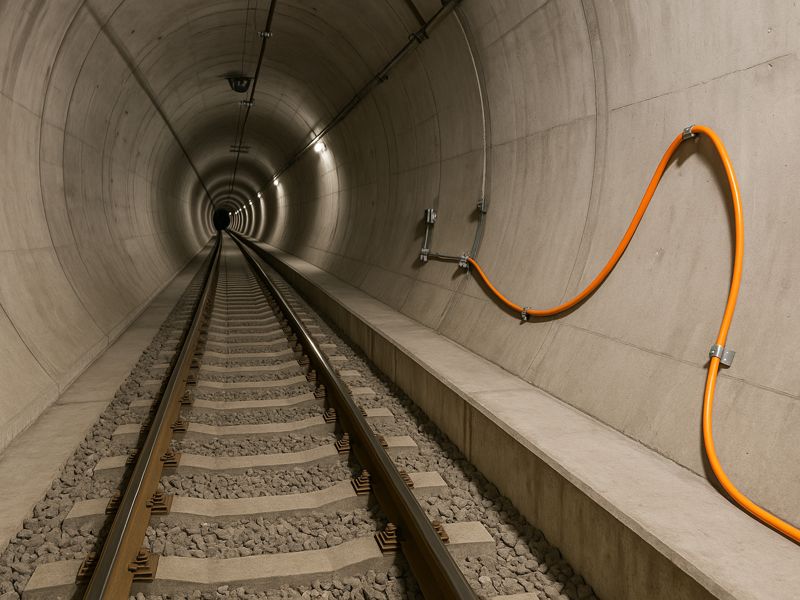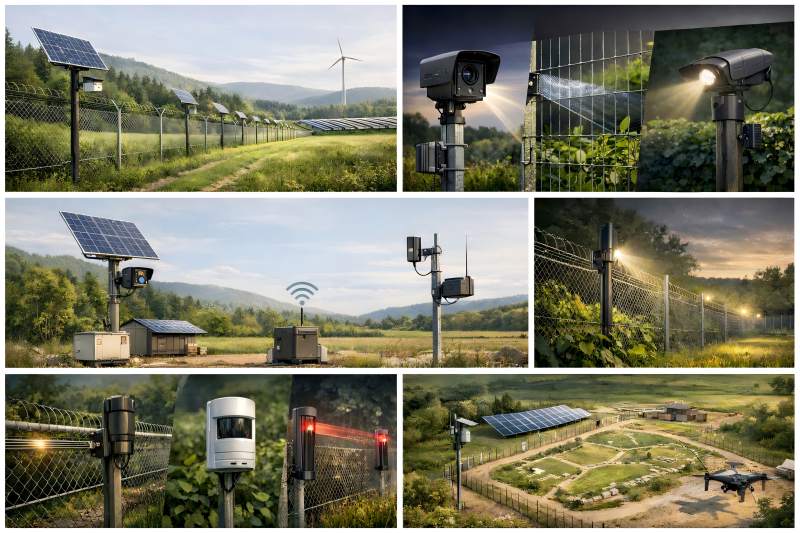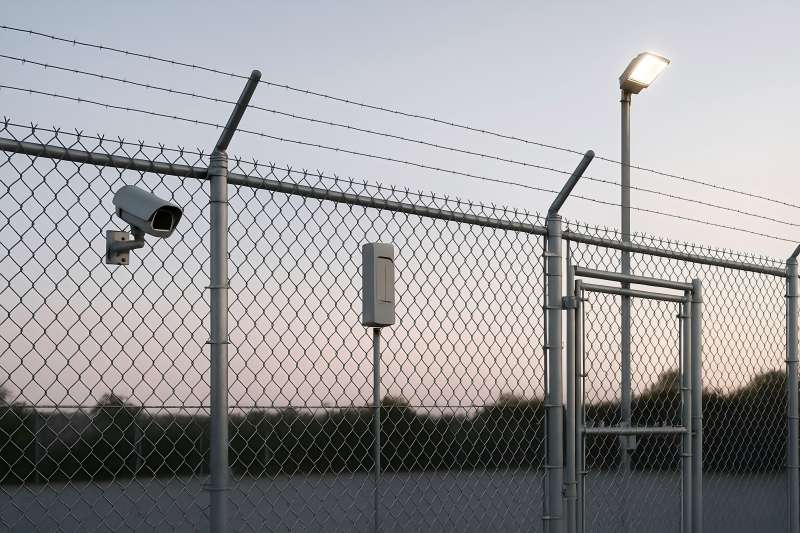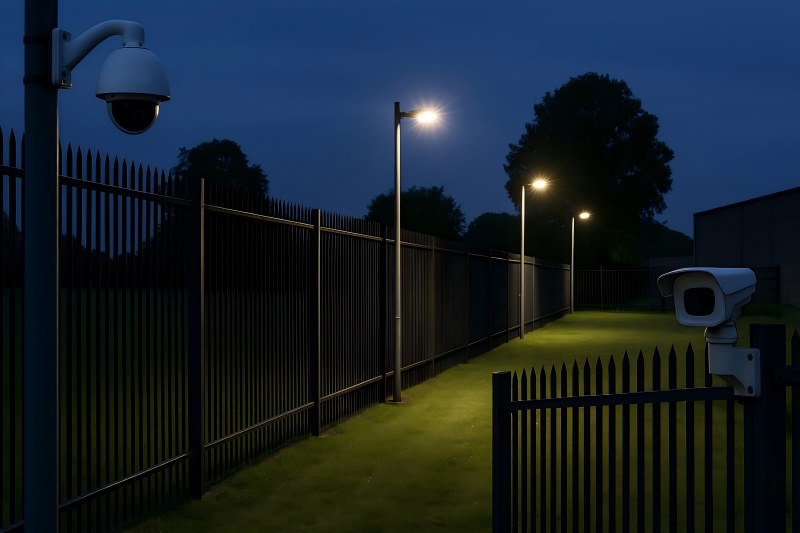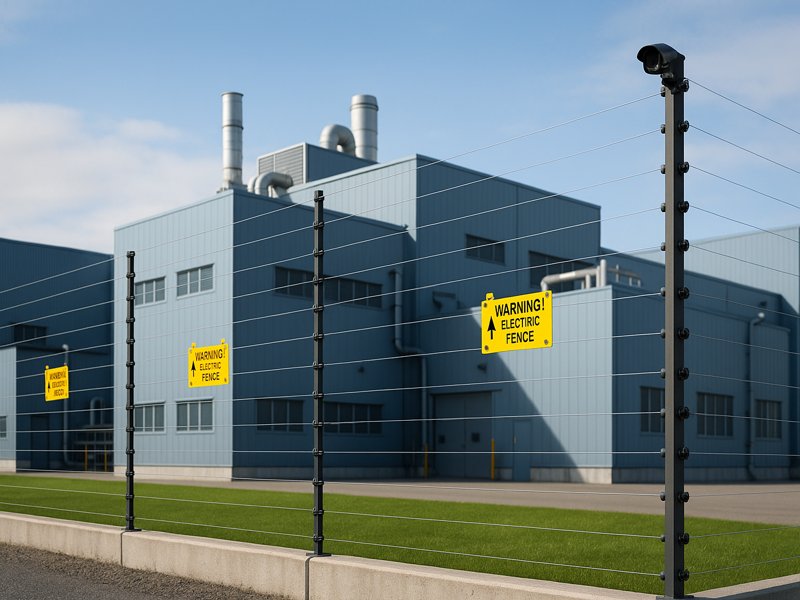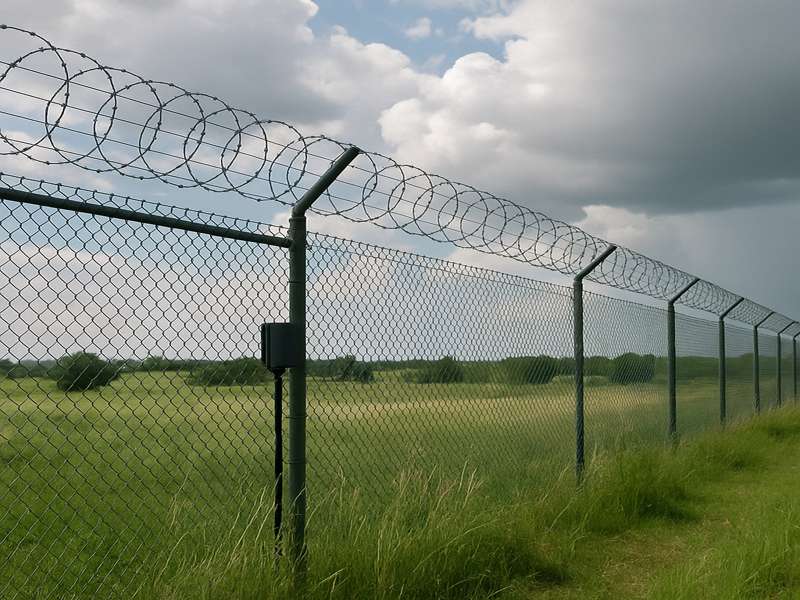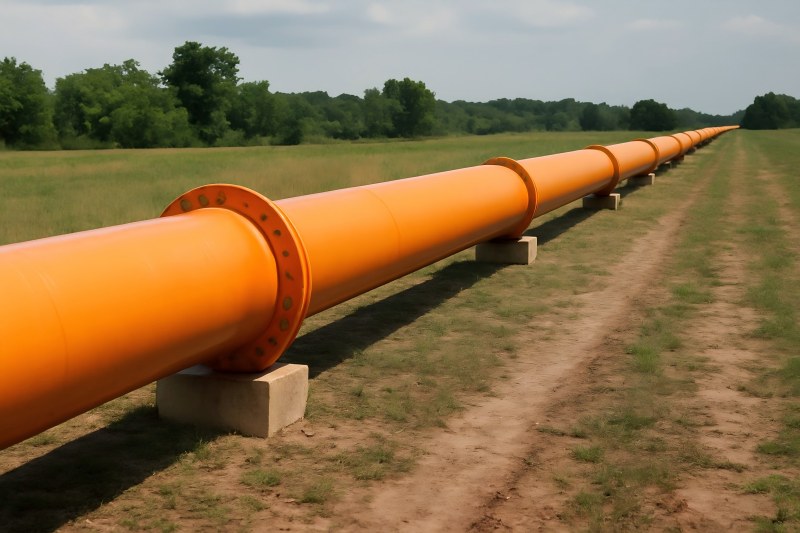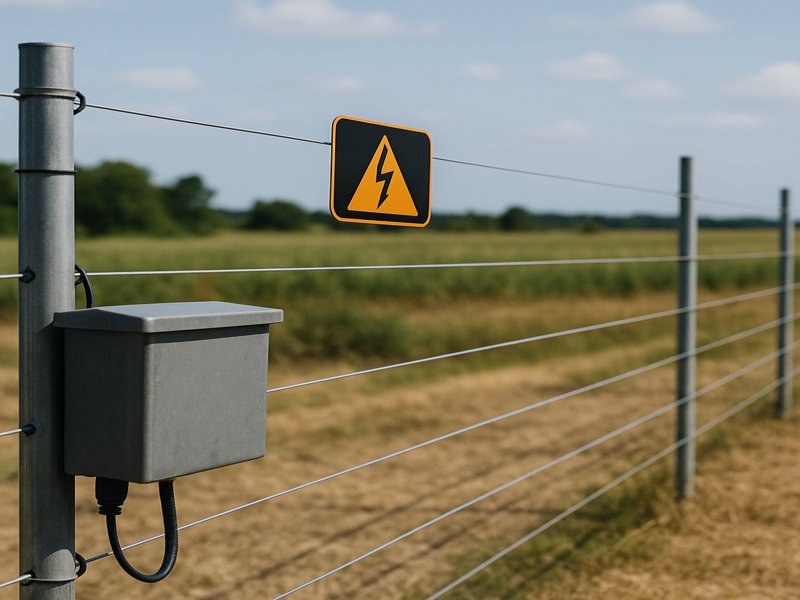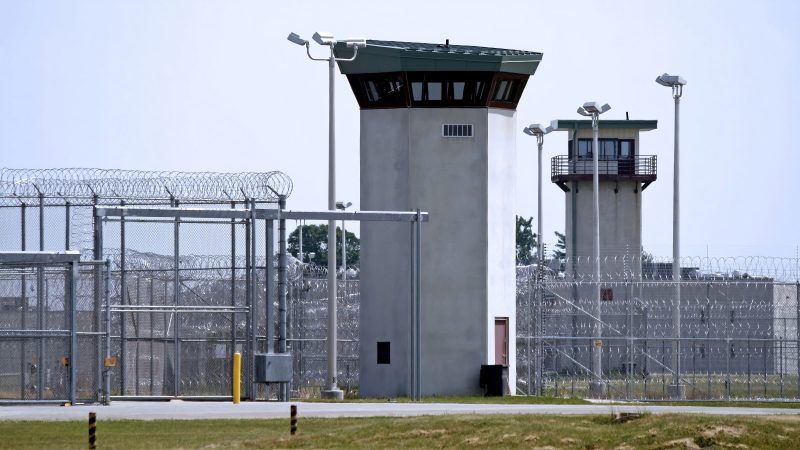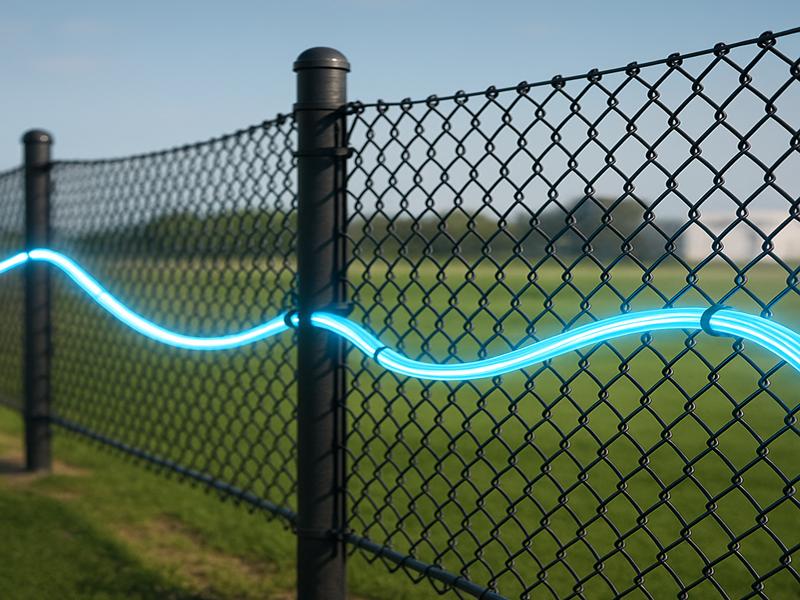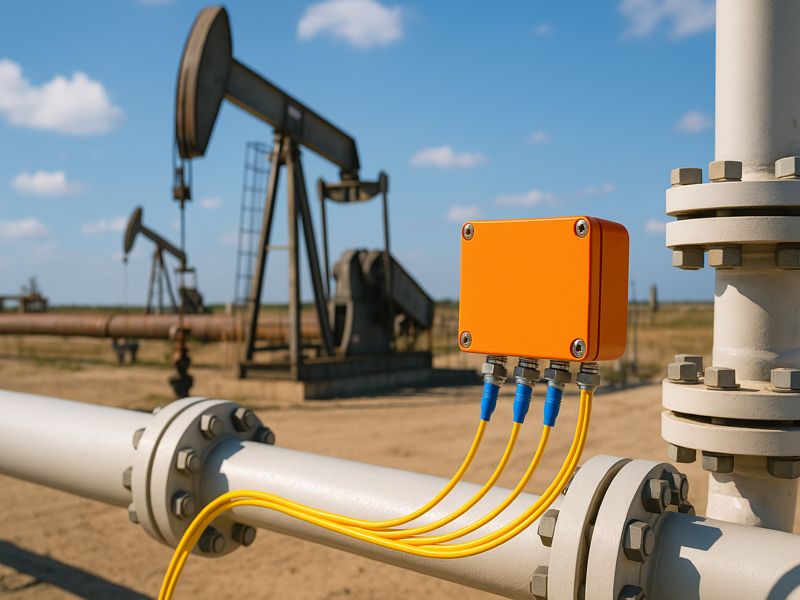Railway and metro tunnels are vital transport links handling heavy traffic in confined spaces where safety failures can be catastrophic. Traditional monitoring—using discrete sensors or manual checks—offers limited coverage and slow response. Fiber optic detection now enables continuous, real-time monitoring, transforming cables into distributed sensors that detect vibration, strain, temperature, and movement with precision. This article explores how such systems enhance tunnel safety, their key applications, and future innovations in rail monitoring.
Understanding Fiber Optic Detection Systems
Fiber optic detection systems operate on the principle of light backscatter analysis. Microscopic flaws in the glass cause some of the light that a laser pulse passes through an optical fiber to be scattered back. Variations in backscattered signals reveal environmental changes along the fiber—such as vibration, temperature shifts, or strain.
Three core sensing technologies are used in tunnel applications:
| Technology | Function | Common Use Case |
| Distributed Acoustic Sensing (DAS) | Detects vibrations and acoustic disturbances | Intrusion, rail faults, rockfalls |
| Distributed Temperature Sensing (DTS) | Measures temperature along the fiber | Fire and heat detection |
| Distributed Strain and Temperature Sensing (DTSS) | Tracks both strain and temperature | Structural deformation monitoring |
These systems provide continuous coverage over kilometers with no electronic components inside the sensing zone—making them durable, EMI-resistant, and low-maintenance. In tunnels where conditions are harsh and access is limited, these features translate into exceptional reliability.
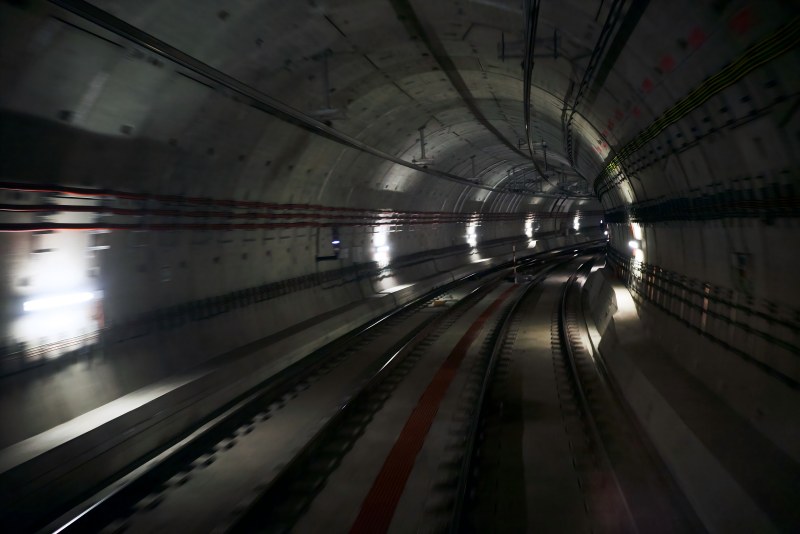
Safety Challenges in Railway and Metro Tunnels
Tunnel environments combine several risk factors that demand constant vigilance:
- Structural and geological instability: Ground movement, rock deformation, or subsidence may stress tunnel linings.
- Fire and overheating: Equipment failures or cable fires can spread rapidly in enclosed tunnels.
- Unauthorized access or intrusion: Human or vehicle entry through maintenance shafts or portals can endanger operations.
- Track and rolling stock failures: Rail cracks, wheel impacts, or dragging components pose accident risks.
- Environmental hazards: Flooding, gas leakage, or electrical faults in confined spaces are hard to detect early.
Given these challenges, traditional point-based sensors are inadequate. Fiber optic systems overcome this by offering distributed, real-time monitoring, transforming every meter of fiber into a safety sensor.
How Fiber Optic Detection Enhances Tunnel Safety
Continuous and Distributed Monitoring
Unlike discrete sensors, fiber optic systems provide complete linear coverage. Every meter of the optical fiber acts as a detection node, ensuring no blind spots from portal to portal.
Real-Time Event Localization
The system can pinpoint the exact position of a vibration, heat source, or strain change—often within ±1–2 meters. This precision accelerates response and minimizes downtime.
Multi-Hazard Detection
One fiber can simultaneously detect vibration, temperature, and strain, offering multi-threat awareness (fire, intrusion, structural damage, or rail issues).
Seamless SCADA Integration
Fiber systems interface directly with tunnel SCADA (Supervisory Control and Data Acquisition) and VMS (Video Management Systems). When a heat or vibration anomaly is detected, the control center can automatically trigger ventilation, cameras, or alarms.
Key Applications in Tunnel Safety
Fiber optic detection systems are adaptable across multiple hazard categories:
| Application Area | Primary Fiber Type | Typical Benefits |
| Fire & Heat Detection | DTS | Early warning of temperature rise and fire spread |
| Structural Health Monitoring | DTSS | Detect lining strain, cracks, and settlement |
| Intrusion Detection | DAS | Detect unauthorized entry or vandalism |
| Track Fault Detection | DAS | Identify broken rails, dragging gear, or wheel impacts |
| Rockfall / Ground Movement | DAS / DTSS | Detect seismic vibrations or tunnel roof instability |
These applications are particularly critical for long tunnels, underground metro lines, and mountainous railway corridors where physical inspection is impractical.
System Architecture and Deployment Considerations
A well-engineered deployment plan ensures reliability and precision.
Fiber Placement:
Cables are installed along tunnel walls, under tracks, or within cable trays. Buried configurations offer better vibration coupling for DAS, while wall-mounted routes are ideal for DTS fire detection.
Installation Methods:
Depending on the environment, fibers can be embedded, clamped, or run through protective ducts to ensure long-term durability.
Signal Processing:
The interrogator unit (DAS/DTS device) captures backscatter data and applies AI-based classification algorithms to filter noise and identify meaningful events.
Localization and Calibration:
Mapping fiber distance to tunnel coordinates is critical for accurate event positioning. Reference markers and calibration runs help maintain precision.
Maintenance:
Systems require minimal upkeep but should be periodically checked for optical loss, mechanical damage, and calibration drift.
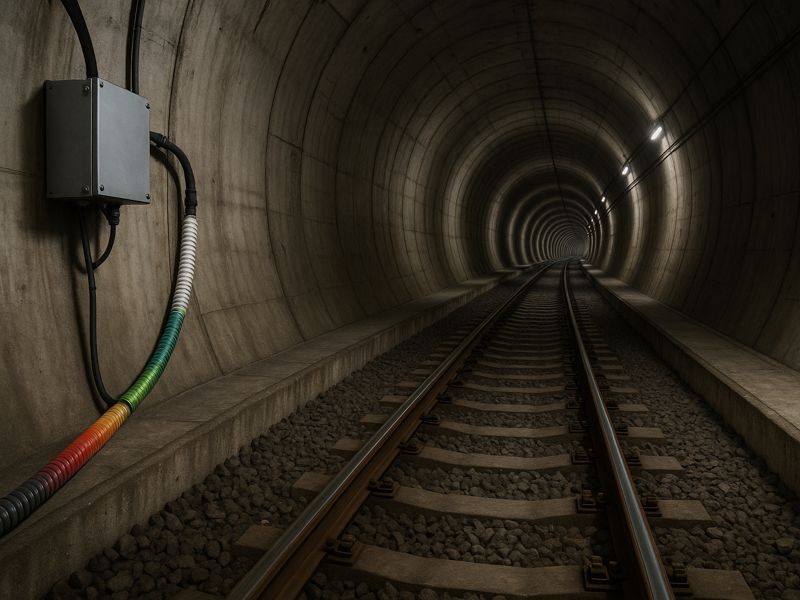
Case Studies and Real-World Implementations
Case 1: Metro Tunnel Fire Detection in Europe
A large metropolitan subway network implemented a Distributed Temperature Sensing (DTS) system along a 5-kilometer twin-tube tunnel. The system detected overheating in a cable tray before smoke appeared, enabling ventilation activation within 20 seconds and preventing service disruption.
Result: 85% reduction in fire response time compared to traditional smoke sensors.
Case 2: Mountain Railway Rockfall Monitoring in Asia
A high-speed rail tunnel under mountainous terrain adopted DAS-based rockfall detection. The system identified impact vibrations near the tunnel entrance during heavy rainfall, automatically signaling maintenance crews.
Result: Early alerts prevented potential derailment, saving millions in equipment repair costs.
Case 3: Combined Safety and Structural Health in Metro Lines
An urban rail operator combined DTS (for fire) and DTSS (for strain) along newly built tunnels. Data integration with the central SCADA system allowed unified monitoring dashboards for both safety and maintenance.
Challenges and Limitations
| Challenge | Description | Mitigation Strategy |
| Calibration Complexity | Tunnel acoustics and material composition vary | Use environment-specific AI models and adaptive calibration |
| False Alarms | Noise from passing trains or maintenance | Implement pattern recognition and event validation logic |
| Retrofitting Costs | Integrating sensing fiber into existing tunnels can be costly | Utilize spare or dark fibers in communication cables |
| Data Management | High-frequency data streams require robust storage | Deploy edge processing and compressive analytics |
| Environmental Harshness | High humidity and vibration stress fiber hardware | Use ruggedized, armored fiber cables and sealed enclosures |
Despite these limitations, operational benefits often outweigh initial installation challenges.
Future Trends in Tunnel Fiber Optic Monitoring
Artificial Intelligence and Machine Learning
Next-generation systems use AI/ML models to classify acoustic or vibration patterns, distinguishing between a human intruder, equipment noise, or natural seismic events. This drastically lowers false alarm rates.
Multi-Sensor Fusion
Manufacturers are integrating DAS + DTS + DTSS into hybrid systems for simultaneous detection of vibration, temperature, and structural strain—enhancing situational awareness.
Digital Twin Integration
Fiber-optic monitoring data is increasingly being integrated into digital twin models of tunnels, allowing predictive maintenance and virtual simulation of hazard scenarios.
Edge and Cloud Analytics
Processing data closer to the source (edge computing) reduces latency, while cloud storage enables multi-tunnel analytics and performance benchmarking.
Standardization and Cybersecurity
Emerging standards are defining interoperability and encryption requirements for critical infrastructure monitoring, ensuring that safety systems meet strict regulatory compliance.
Implementation Roadmap for Tunnel Operators
Implementing fiber optic safety systems requires a phased, strategic approach:
Risk Assessment and Objective Definition
- Identify target hazards (fire, intrusion, deformation).
- Set measurable KPIs such as detection latency, localization accuracy, and false alarm rate.
Infrastructure Audit
- Review existing communication fibers for sensing suitability.
- Plan routes ensuring full coverage without interference.
Technology Selection
Choose DAS for acoustic threats, DTS for thermal hazards, DTSS for structural monitoring—or hybrid systems for comprehensive protection.
Pilot and Calibration
- Deploy on a 1–2 km section first.
- Collect baseline data and fine-tune classification models.
Integration with SCADA Systems
Link event alerts to control systems for automatic responses (e.g., camera focus, ventilation activation, or alarm notification).
Full-Scale Rollout and Training
- Expand across the network.
- Train operators on system interpretation and incident handling.
Lifecycle Maintenance
- Periodic fiber inspection, recalibration, and algorithm updates.
- Continuous improvement through incident feedback loops.
Railway and metro tunnel safety is no longer limited to manual patrols and point sensors. Fiber optic detection systems represent a new era of continuous, intelligent safety monitoring. Through distributed acoustic, temperature, and strain sensing, operators can detect and localize events in real time—transforming tunnel management from reactive to predictive.
Rail operators may improve maintenance, decrease downtime, and increase passenger safety by putting these solutions into place. As urban transit networks expand globally, fiber optic detection will become the standard backbone for tunnel safety, combining technology, data, and automation into one resilient infrastructure protection framework.
